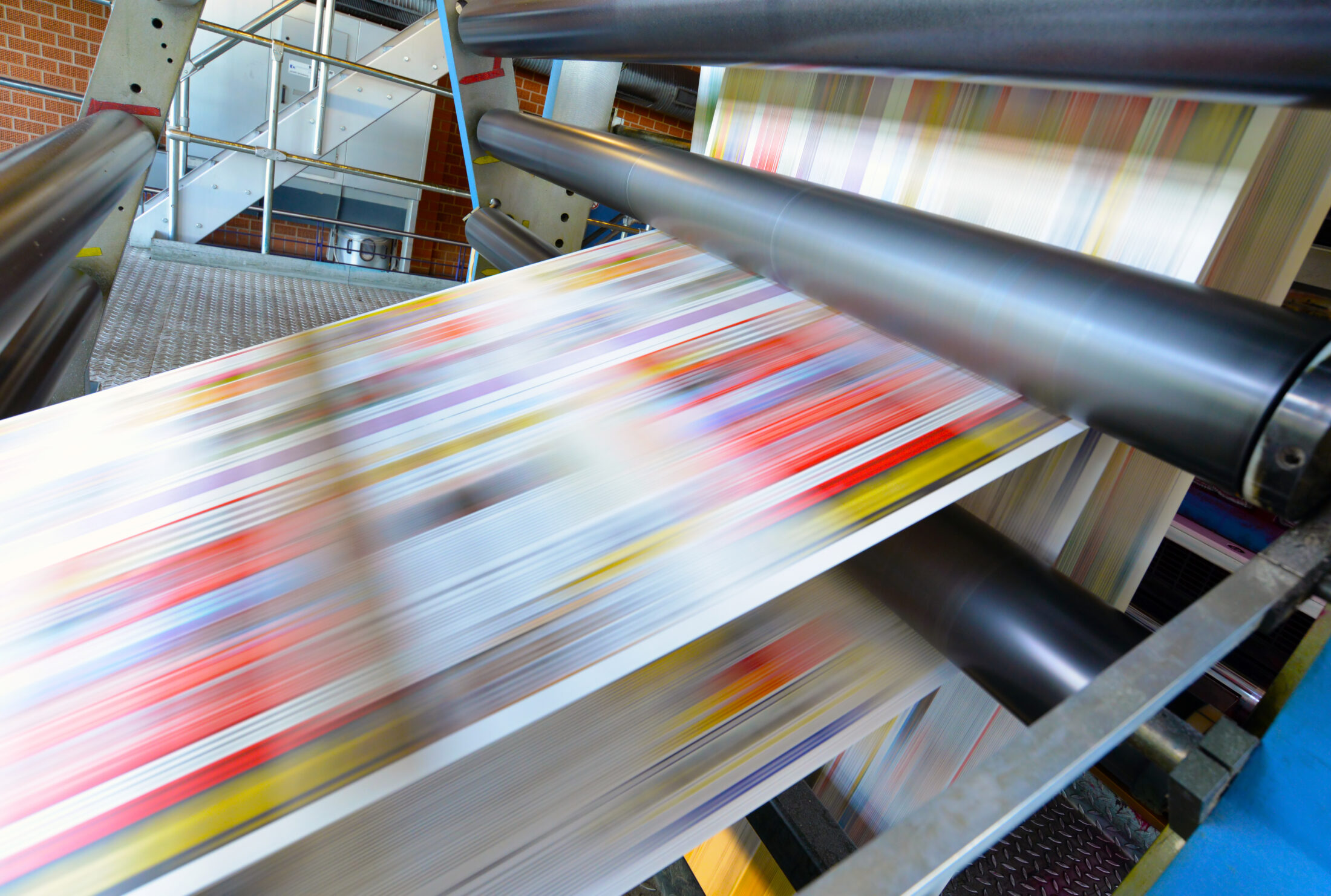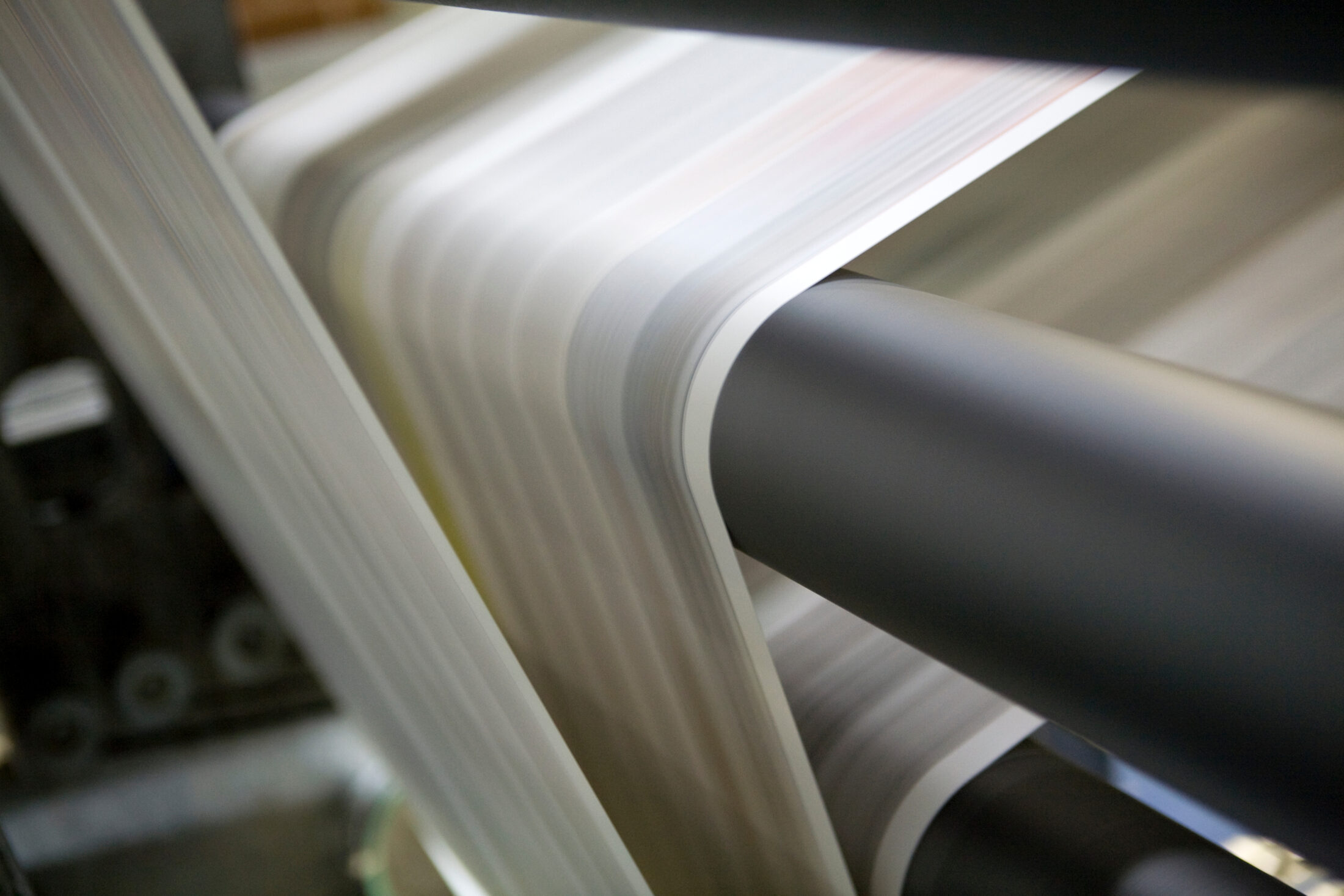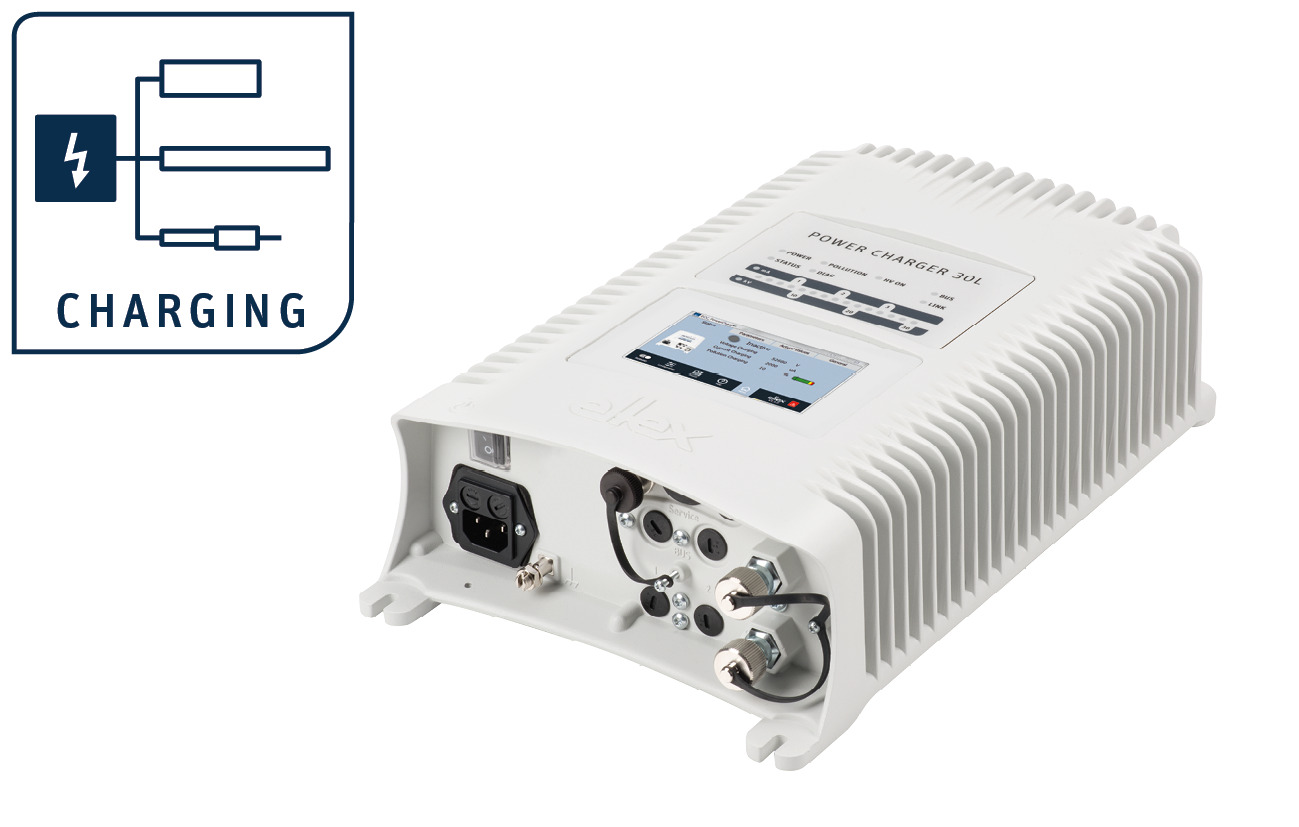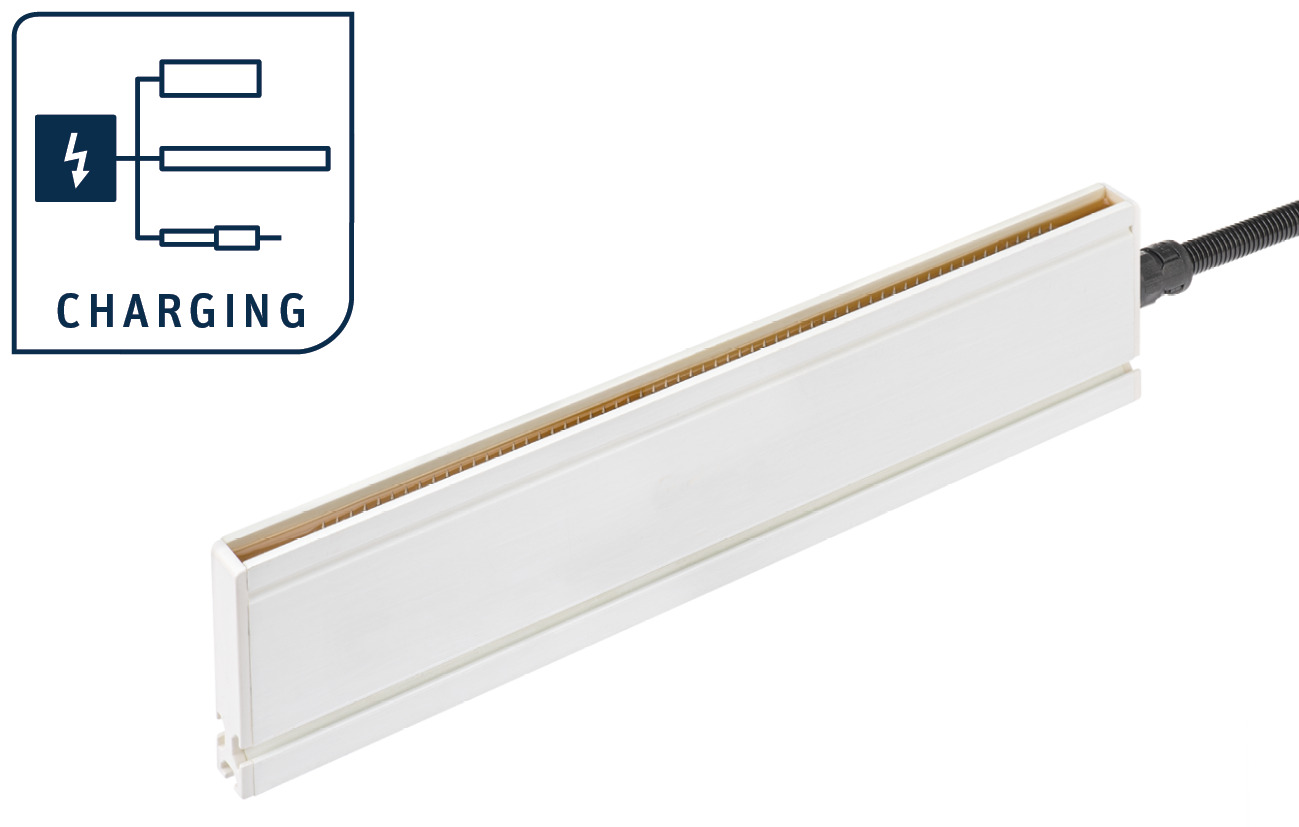By using charging bars with unequal polarity, the paper ribbons can be electrostatically stabilized. Higher web speeds with higher quality are possible.

Electrostatic ribbon tacking of paper ribbons in split & merge modules

What does a split & merge module do?
The machine consists of an unwinder, a split & merge module and a cross cutter. After unwinding the digitally printed paper, the split & merge module is used. The paper web is fed over a plow fold and folded in such a way that the original web width is halved. This allows 2 paper thicknesses to be fed into the cross cutter to produce products such as 4-sided letters. Papers from 40 to 250 gsm are processed.

Can the paper ribbons slip?
In one type of production, a waste strip is cut across the web and extracted. The suction channel can become clogged if the waste strip cannot be suctioned off in a dimensionally stable manner. In another type of production, the web is cut lengthwise on the folded side so that the two ribbons are transported loosely on top of each other before being cross-folded. The two ribbons can slip in the machine.
Our solution
Which Eltex components are used?

POWER CHARGER
The POWER CHARGER units cover various performance stages and charging applications. They can be operated either with a supply voltage of 24 V DC or a line voltage in the range of 85 V – 264 V AC. The output voltage is 75 or 150 watts. A membrane keyboard or an optionally available, integrated touch panel is used to control the generators. POWER CHARGER units can be operated using analog operation or via digital fieldbus interfaces. At the market launch, a control system that uses CANopen and ModbusTCP are available. The modular system is only prepared for integrating other fieldbus standards. Protocol/device description files of the fieldbus interfaces for integration into the machine control: Information on fieldbus integration

R130
Heavy-duty precision bar for supply voltages up to 60 kV. The charge and field distribution have been substantially improved by the optimized arrangement of the individual bars. Separate current-limited tips prevent an increase in air ionization and high-energy brush discharges.